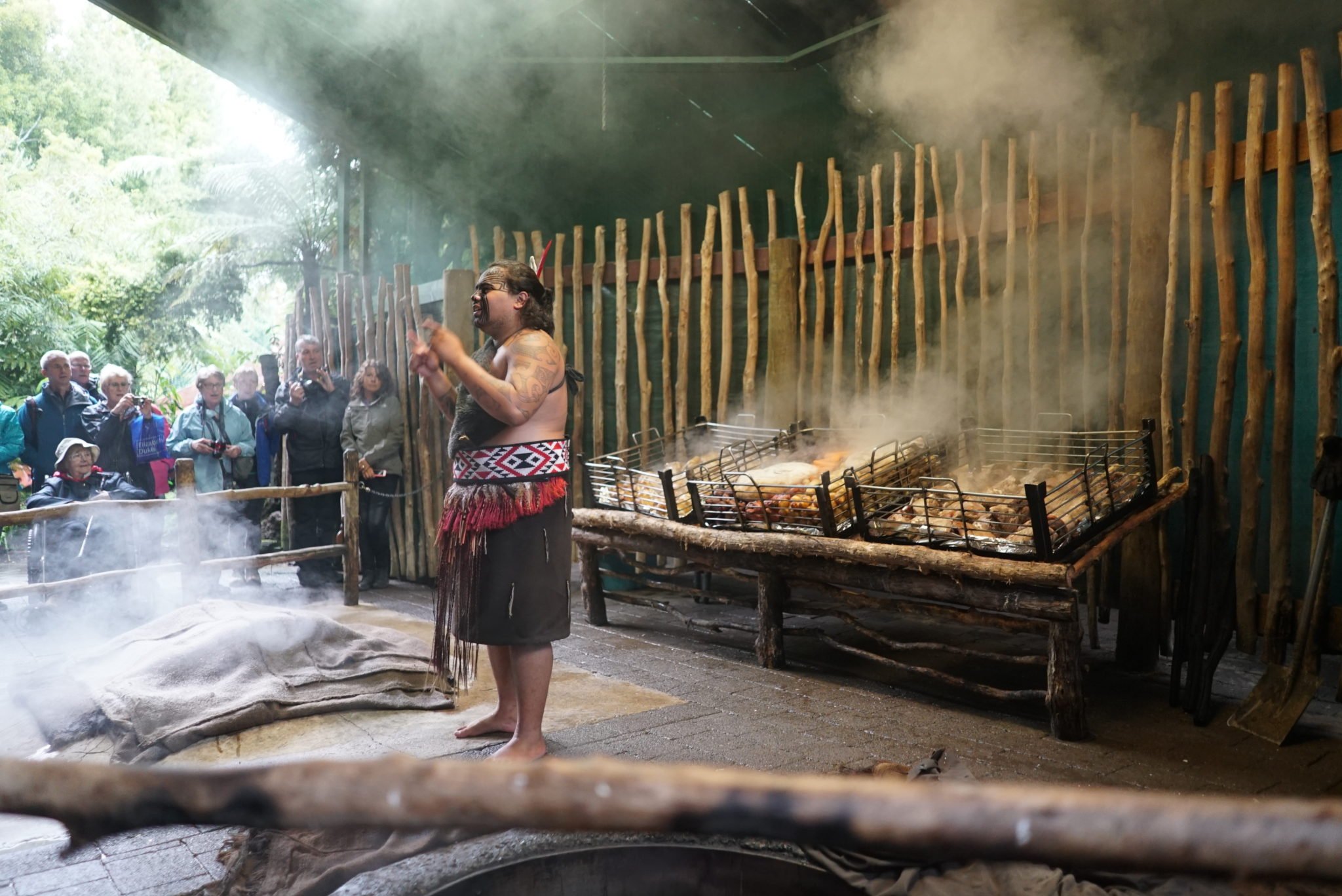Tamaki Maori Village
Rotorua, New Zealand - Day 4
Kia ora! In Moari that means be well or healthy and is used as a greeting. The rain never let up today and spoiled some plans of kayaking, but we didn't let that get us down. Instead we donned our rain jackets and explored downtown Cambridge and Rotorua. We had lunch at a trendy burger place named Paddock in Cambridge, which would fit right in back home. While walking around Rotorua we kept getting very unpleasant whiffs of smells, honestly the first bad smell in New Zealand...the place is made of potpourri. I had forgotten that there is a lot of geothermal activity around the area and it was definitely the sulfur wafting by because of that.
We checked in at the main office for Tamaki Maori Village and were soon on a bus, headed outside of town to the village. The village is a recreation, but they kept with tradition and everything from statues to houses were designed, carved, and placed around the village in Maori fashion. On the way to the village our group choose our chief, a Scotsman named Bill. Our fearless leader led us into the entrance of the village where we witnessed the pōwhiri, a welcoming ceremony. During this, the hosting chief and warriors would demonstrate the wero, a challenge to unknown or non Maori people. The hosting warriors would skillfully spin their spears, scream war cries, and flash intimidating grimaces towards the visitors. If the visitors do not run in fear and the hosting tribe deems them worthy, the hosting warriors will offer a gift to the visiting chief. Fortunately, they deemed Bill worthy and placed a small wooden statue on the ground. Bill carefully picked it up and that concluded the pōwhiri. The kaikaranga, a female caller, announced we were able to enter the village and that we would feast to celebrate the occasion.
At this point our hosting Moari tribe were allowed to "break character." This village is a set of sorts that employs Maori descendants to assume the roles of the Maori people as they lived hundreds of years ago. This is not an actual live in village, because those don't exist anymore, but it is a really cool way for both Maori people to demonstrate their ancient culture and visitors to experience and learn the traditions of these tribes. As we walked around the village we learned about the importance of the canoe and how New Zealand was the farthest and last place the Polynesian people that became Maori settled. Katie helped demonstrate the used of a Poi, which is a ball on the end of a rope. It can be used as a percussion instrument by smacking it into your palm or twirled around for show. The men of our group were also taught the haka war dance. We were very intimidating, and obviously had no challengers.
The hosting Tamaki tribe lead us to their Wharenui (meeting house) where they performed traditional Maori song and dance. Katie and I both enjoyed the performances as it was unlike anything we had seen before. With the rain still coming down, we then made our way to the feasting hall were we enjoyed a hāngi cooked meal. A hāngi is a method of cooking under the earth. The Moari would dig a whole in the ground, then first add volcanic rock that had been heated in a fire, followed by several baskets of food, and then buried.














